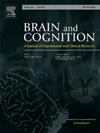脑电图显示了双眼颜色融合和竞争的关键特征。
IF 1.4
3区 心理学
Q3 NEUROSCIENCES
引用次数: 0
摘要
大脑对颜色反应敏感性的差异可能导致脑电图(EEG)成分的潜伏期和振幅的显著差异。本文研究了观看立体三维(3D)显示器时双眼色彩融合和双眼色彩竞争的脑电图特征。脑电实验在传统的三维显示平台上进行。研究了8名受试者在感知双眼颜色融合和双眼颜色竞争时的事件相关电位(ERP)和功率谱的差异。结果表明:1)双眼颜色融合的ERP分量N1和P2潜伏期短于双眼颜色竞争;2)双眼颜色融合的ERP分量P2和P3振幅大于双眼颜色竞争;3)双眼颜色竞争以左半球为主,而双眼颜色融合则更多地参与右半球。这些结果表明,在认知加工的初期和中期,大脑对双眼颜色融合的反应要快于双眼颜色竞争的反应。双眼颜色融合和竞争都涉及视觉后处理,但双眼颜色融合需要更多的神经资源分配。功率谱分析揭示了双眼颜色融合和竞争的大脑偏侧,提示大脑处理这种双眼输入的方式可能对其功能产生影响。本文章由计算机程序翻译,如有差异,请以英文原文为准。
EEG reveals key features of binocular color fusion and rivalry
Differences in the brain sensitivity to color responses may cause significant differences in the latency and amplitude of the electroencephalographic (EEG) component. This paper investigated the electroencephalography features of binocular color fusion and binocular color rivalry when watching stereoscopic three-dimensional (3D) displays. EEG experiments were conducted on a conventional 3D display platform. Eight subjects were involved to analyze differences in the event-related potential (ERP) and power spectrum when the brain perceived binocular color fusion and binocular color rivalry. Results show that: 1) the latencies of ERP components N1 and P2 of binocular color fusion were shorter than that of binocular color rivalry, 2) the amplitudes of the ERP components P2 and P3 of binocular color fusion were greater than that that of color rivalry, and 3) the left hemisphere was dominant for binocular color rivalry while the right hemisphere was greater involved in binocular color fusion. These results indicate that during the initial and mid-term cognitive processing, the brain response to binocular color fusion is faster than binocular color rivalry. Both binocular color fusion and rivalry involve visual post-processing, but binocular color fusion requires a greater allocation of neural resources. Power spectrum analysis revealed the cerebral lateralization in binocular color fusion and rivalry, it suggested that the way the brain processes this binocular input can have effects on its function.
求助全文
通过发布文献求助,成功后即可免费获取论文全文。
去求助
来源期刊

Brain and Cognition
医学-神经科学
CiteScore
4.60
自引率
0.00%
发文量
46
审稿时长
6 months
期刊介绍:
Brain and Cognition is a forum for the integration of the neurosciences and cognitive sciences. B&C publishes peer-reviewed research articles, theoretical papers, case histories that address important theoretical issues, and historical articles into the interaction between cognitive function and brain processes. The focus is on rigorous studies of an empirical or theoretical nature and which make an original contribution to our knowledge about the involvement of the nervous system in cognition. Coverage includes, but is not limited to memory, learning, emotion, perception, movement, music or praxis in relationship to brain structure or function. Published articles will typically address issues relating some aspect of cognitive function to its neurological substrates with clear theoretical import, formulating new hypotheses or refuting previously established hypotheses. Clinical papers are welcome if they raise issues of theoretical importance or concern and shed light on the interaction between brain function and cognitive function. We welcome review articles that clearly contribute a new perspective or integration, beyond summarizing the literature in the field; authors of review articles should make explicit where the contribution lies. We also welcome proposals for special issues on aspects of the relation between cognition and the structure and function of the nervous system. Such proposals can be made directly to the Editor-in-Chief from individuals interested in being guest editors for such collections.
 求助内容:
求助内容: 应助结果提醒方式:
应助结果提醒方式:


